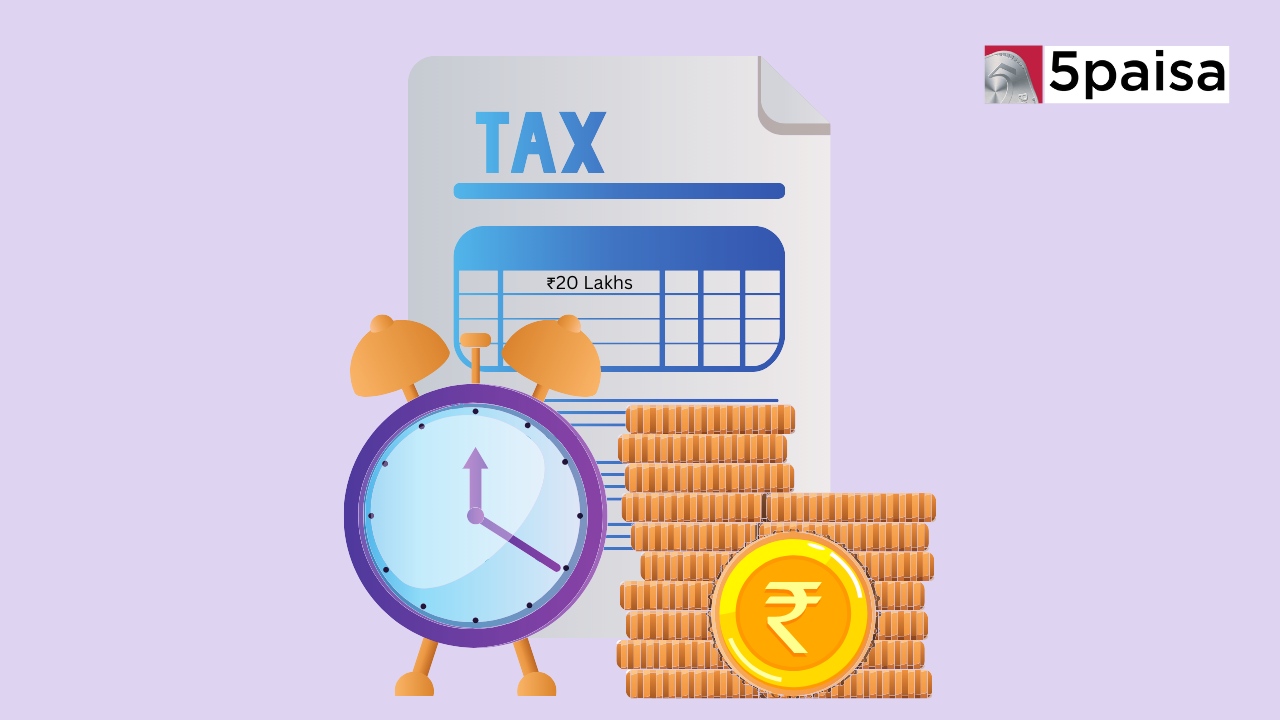10 Best Investment Plans for Monthly Income

Last Updated: 8th August 2024 - 03:31 pm
Achieving a steady stream of monthly income is a common financial goal for many people, whether they are retired, nearing retirement, or want additional income. In today's unstable economic world, exploring financial choices that can provide a regular income flow while keeping a balanced risk profile is crucial. This piece discusses the 10 best investment plan for monthly income 2024, giving insights into their features, possible returns, and fit for different investment goals.
iJoin the club of lakhs of tech savvy investors!
What is a Monthly Income Plan?
A monthly income plan, also known as a monthly income scheme or an income-generating investment plan, is an investment intended to provide owners with regular, scheduled payouts from their investment fund. These plans aim to create a steady cash flow, often through dividends, interest payments, or capital gains payouts, making them an attractive choice for people wanting a reliable source of monthly income. Monthly income plans can be organized in various ways, including mutual funds, fixed-income instruments, real estate investments, and pension plans.
Overview of Top 10 Best Investment Plans for Monthly Income 2024
Debt mutual funds deal in fixed-income instruments like government bonds, business bonds, and money market instruments. These funds can provide regular interest income and are perfect for buyers wanting a stable monthly income stream with modest risk. Debt funds offer a variety of benefits and are handled by professional fund managers who actively manage the portfolio to improve profits.
Equity Mutual Funds with Dividend Choices
Certain equity mutual funds offer dividend choices, where a part of the fund's profits is given as payments to owners. These funds can provide a mix of capital growth and regular income through dividend payouts. However, it's important to note that income payouts are not promised and depend on the fund's success and the fund manager's judgment.
Post Office Monthly Income Plan (POMIS)
The Post Office Monthly Income Scheme (POMIS) is a government-backed financial plan with a set interest rate and monthly interest payouts. It's a low-risk choice for careful buyers with a steady monthly income. POMIS has a term of 5 years and offers interest rates usually higher than regular savings accounts.
Corporate Fixed Deposits
Fixed deposits with reputable companies can offer higher interest rates than bank accounts, making them a possible source of monthly income. Non-banking financial companies (NBFCs) usually offer these fixed accounts and can provide regular interest payouts. However, it's essential to judge the trustworthiness of the granting company and understand the related risks.
Senior Citizen Savings Scheme (SCSS)
The Older Citizen Savings System (SCSS) is a government-backed savings system created especially for older people aged 60 and above. It offers a set interest rate and quarterly interest payouts, providing seniors with a stable monthly income source. SCSS is a low-risk business choice backed by the government and provides tax benefits under section 80C of the Income Tax Act.
Rental Income from Real Estate
Investing in income-generating properties can provide a steady monthly rental income. However, this choice takes a significant initial investment and includes property management duties, such as keeping the property, finding renters, and handling any issues. Real estate purchases can also provide possible cash growth over the long run.
Annuity Plans
Annuity plans are insurance products that provide a sure stream of monthly income for a set time or life. These plans can be attractive for individuals wanting a steady monthly income during retirement. Annuity plans involve paying a large sum to the insurance company and giving regular monthly payouts based on the chosen annuity choice.
Peer-to-Peer (P2P) Lending
Peer-to-Peer (P2P) lending systems allow users to give money to borrowers and earn interest on their investments. While having some risk, P2P loans can create monthly interest income for clients. These platforms typically offer higher interest rates than standard fixed deposits or savings accounts. Still, investors should carefully evaluate the trustworthiness of borrowers and spread their investments across multiple borrowers to minimize risk.
Dividend-Paying Stocks
Investing in high-quality, dividend-paying stocks can provide a regular monthly income stream through dividend payouts. However, this choice carries market risk, and income payouts are uncertain and still being determined. Investors should carefully study and pick companies with a proven track record of steady income payments and strong financials.
Bond Ladder Portfolios
A bond ladder strategy involves buying several bonds with varying end dates. As each bond matures, the capital can be put into a new bond, providing a constant stream of interest payments and possible monthly income. Bond ladder portfolios offer various benefits and can be adjusted to an investor's income needs and risk tolerance.
Performance of Top 10 Investment Plans for Monthly Income
Here is performance table of best Monthly Income plan 2024:
| Investment Plan | Expected Annual Returns | Risk Level |
| Debt Mutual Funds | 6-8% | Moderate |
| Equity Mutual Funds with Dividend Options | 10-12% | High |
| Post Office Monthly Income Scheme (POMIS) | 7.6% (current rate) | Low |
| Corporate Fixed Deposits | 7-9% | Moderate |
| Senior Citizen Savings Scheme (SCSS) | 8% (current rate) | Low |
| Rental Income from Real Estate | 6-10% | Moderate to High |
| Annuity Plans | 6-8% | Low to Moderate |
| Peer-to-Peer (P2P) Lending | 12-18% | High |
| Dividend-Paying Stocks | 8-12% | High |
| Bond Ladder Portfolios | 6-8% | Moderate |
Why should you invest in a Monthly Income Plan?
Investing in a best Monthly Income plan 2024 can offer several benefits:
- Regular Cash Flow: Monthly income plans provide a regular and expected cash flow, which can be especially useful for individuals who depend on their investments for living costs or supplementing their income. This regular cash stream can help planners control costs more effectively.
- Diversification: Many monthly income plans offer diversification across asset classes, industries, or investment types, helping to reduce risk and provide a more stable income stream. Diversification is a crucial concept in investing, as it helps to reduce the total portfolio risk and lessen the effect of any single investment's underperformance.
- Tax Efficiency: Certain monthly income plans, such as debt mutual funds or dividend-paying stocks, may offer tax benefits based on an individual's tax bracket and investment holding time. For instance, mutual funds for debt are taxed based on the investor's income tax slab, while bonus income from stocks may be taxed at a lower rate than other income sources.
- Convenience: Monthly income plans often handle income sharing, removing the need for human transfers or stock adjustments. This feature can be handy for individuals who prefer a hands-off approach to handling their finances or those who depend on a regular cash stream for living costs.
- Potential for Growth: While the primary goal of monthly income plans is to produce a steady income stream, some plans, such as equity mutual funds with dividend choices or dividend-paying stocks, also offer the potential for capital growth over the long term.
Factors to Consider Before Best Investment Plan for Monthly Income in India
Here are factors to consider for Best Investment Plan for Monthly Income in India:
- Investment Horizon: Determine your investment timeline and choose a regular pay plan that fits your goals. Specific plans may have lock-in periods or early exit fees, impacting your ability to access your funds when needed.
- Risk Tolerance: Assess your risk appetite and choose a plan that fits your risk profile. Generally, higher-risk investments offer higher possible gains but carry more significant fluctuation. Mixing risk and gain based on your circumstances and financial goals is essential.
- Liquidity Needs: Consider your cash needs and ensure that your monthly income plan allows easy access to funds if needed. Some plans, such as fixed savings or pension plans, may have limits on withdrawals or fines for early withdrawals.
- Taxation: Understand the tax consequences of your chosen monthly income plan and factor in any possible tax bills or rewards. Consulting with a financial expert or tax professional can help you make informed choices regarding the tax effects of your purchases.
- Fees: Evaluate the fees, charges, and other costs connected with the monthly income plan to ensure they match your financial goals and expectations. High fees can significantly reduce your profits over time, so it's essential to consider the general cost structure of the investment plan.
- Issuer Credibility: For investments like fixed savings or bonds, study the reputation and financial health of the giving institution or business. Investing in respected and financially sound companies can help minimize the risk of failure or non-payment.
- Diversification: While some monthly income plans offer built-in diversification, it's generally advisable to spread your investments across different asset classes and types to reduce total portfolio risk.
What Is the Importance of a Monthly Income Generation Plan?
A well-structured monthly income creation plan is essential for several reasons:
- Retirement Planning: Monthly income plans are essential for retirees, as they can supplement pension or social security income and help keep a desired standard of living during retirement years. With a growing life span and the possibility of rising healthcare costs, a steady monthly income stream can provide financial stability and peace of mind in retirement.
- Risk Mitigation: By spreading across different income-generating businesses, people can reduce the risk of depending on a single income source and ensure a more stable cash flow. Diversification helps to reduce the overall portfolio risk and reduces the effect of any single investment's underperformance.
- Goal Achievement: Whether paying for schooling, buying a home, or meeting other financial goals, a regular income generation plan can help people collect the necessary funds over time. A steady income stream can be utilized to meet specific financial goals or milestones.
- Legacy Planning: For those looking to provide for their loved ones, a well-designed monthly income plan can serve as a source of wealth or a means to support children. It can ensure that financial resources are available to meet the wants of heirs or relatives even after the investor's passing.
- Budgeting and Expense Management: A steady monthly pay stream makes budgeting and handling costs easier. Regular cash flow can help people plan their spending, make quick payments, and avoid financial stress or sudden gaps.
- Flexibility and Adaptability: Certain monthly income plans, such as mutual funds or dividend-paying stocks, offer the flexibility to change investing strategies or portfolios as required. This flexibility can be helpful in response to changing market conditions, personal circumstances, or financial goals.
By carefully considering the value of a monthly income generation plan and choosing the proper investment choices, people can build a solid financial plan that provides a steady income stream, mitigates risks, and supports their long-term financial goals.
Conclusion
Investing in the right monthly income plan is crucial for people wanting a reliable and regular income. The ten investment plans described in this piece offer various choices, catering to different risk types, investment horizons, and financial goals. By carefully considering risk tolerance, cash needs, and taxes, investors can make informed choices and choose the most suitable monthly income plan for their unique circumstances.
It's important to note that each investment plan brings its risks and possible benefits, and buyers should thoroughly study and understand the details of each choice before investing their funds. Seeking professional financial help can further assist in managing the difficulties of these investment choices and building a well-diversified portfolio that fits with long-term financial goals.
Regularly reviewing and adjusting the monthly income portfolio is also essential to ensure that it meets the investor's growing needs and matches their risk tolerance and investment goals. By taking a disciplined and varied approach to monthly income spending, people can increase their chances of achieving financial safety and getting a steady income stream for years to come.
- Flat ₹20 Brokerage
- Next-gen Trading
- Advance Charting
- Actionable Ideas
Trending on 5paisa
Personal Finance Related Articles
Disclaimer: Investment in securities market are subject to market risks, read all the related documents carefully before investing. For detailed disclaimer please Click here.
 5paisa Research Team
5paisa Research Team
 Sachin Gupta
Sachin Gupta




